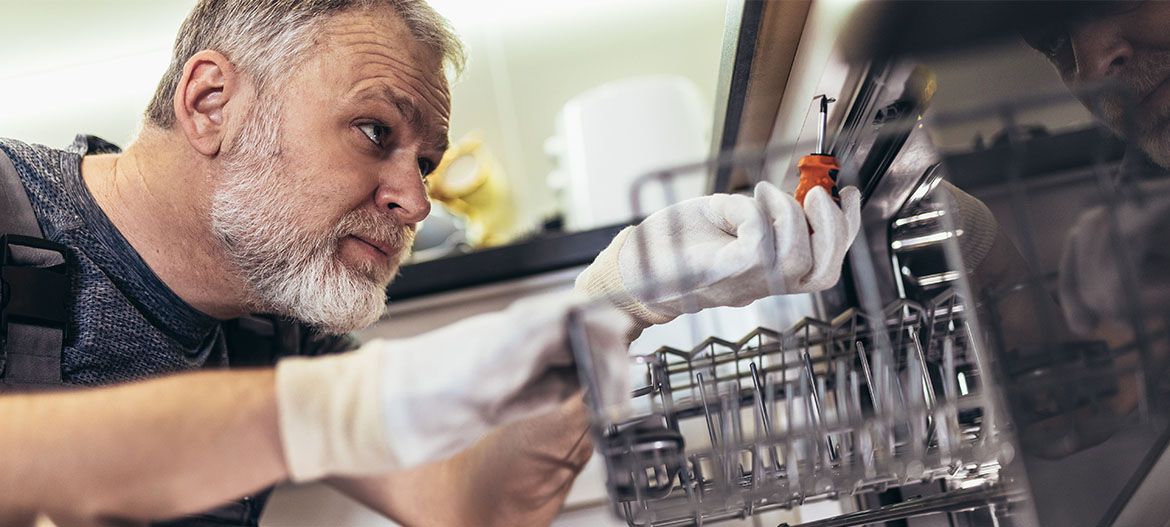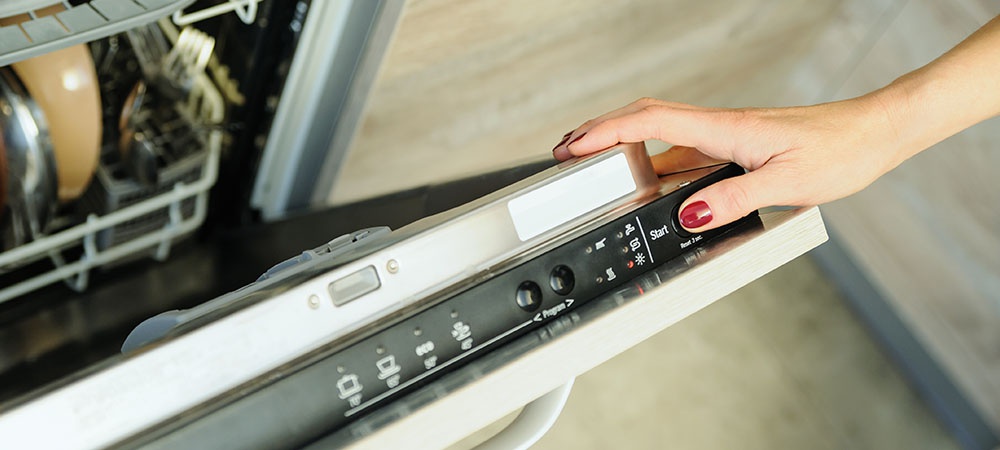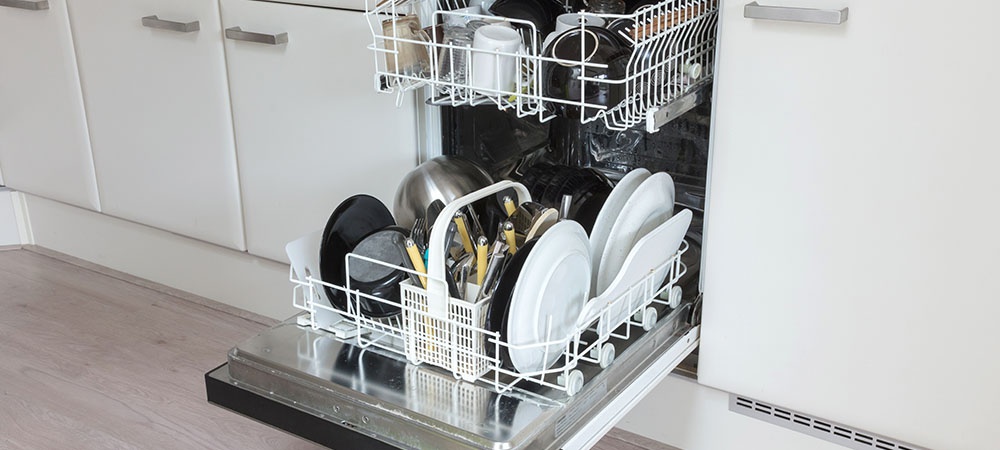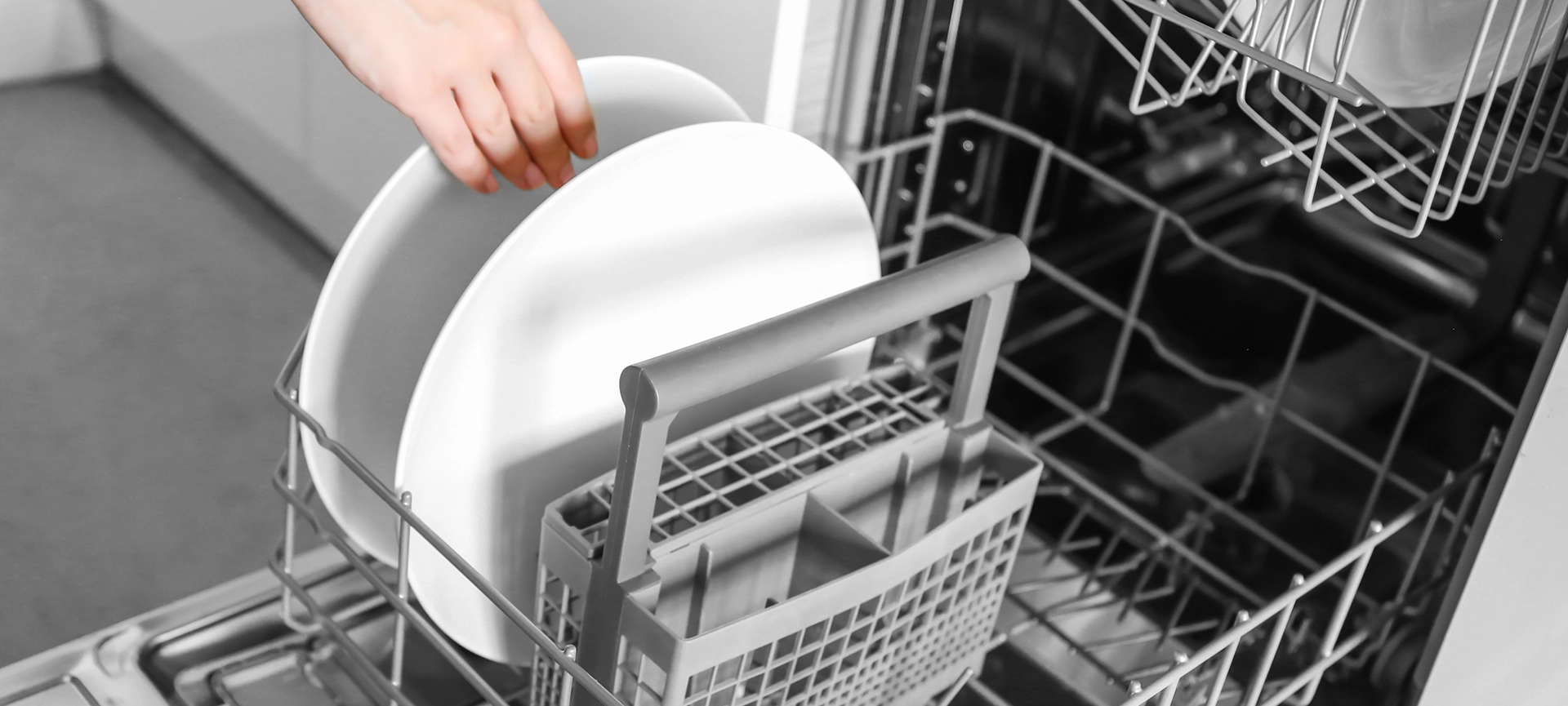Dishwashers are some of the most underappreciated home appliances. Have you ever heard anyone say, “I love my dishwasher and how it gets the plates clean every time without any problems”? We haven’t either. But you can’t deny how well these machines serve you faithfully day in and out. So would you at least give a thought or two about them?
Even if you don’t want to waste your “precious time and thoughts” on dishwashers, you’ll eventually do it. When the dishwashers break down, you’ll not only think about the appliance but also how to DIY repair it quickly. Sadly, you may have to pay a technician to help you fix the faulty dishwasher even though you could have prevented the problem with proper maintenance.
If you’ve decided to pay more attention to your dishwasher, we’ll be glad to help you. We’ve provided a bunch of tips to help you identify potential problems with your dishwasher and DIY repair minor faults. So then, let’s get into it.
How to Troubleshoot your Dishwasher and Detect Faulty Components
Your dishwasher will exhibit several general signs before spazzing out of commission. If you’re attentive enough, you’d recognize these symptoms and take action quickly. However, if you don’t care that much, you’ll ignore the signals until the unit says, “Okay, I’m done!” Then you’ll have to pay a technician to get it back up. Below are some tell-tale signs of impending issues with your dishwasher.
A Leak
Yes, your dishwasher uses a lot of water; most of its functionalities revolve around water and plates. But that doesn’t mean the water should leak out all around the unit. So, if you notice anything like that, your dishwasher may be trending towards an unpleasant break.
Generally, dishwasher leaks happen when the device is unbalanced, which may cause the water to leak out from the sides. In that case, you only need to make the device sit properly on all legs. However, that’s only reasonable if you keep finding small pools of water around the machine after each use.
If the pool is much larger, you have a bigger problem on your hands and may want to call a technician if you’re not a DIY master. There’s possibly a hole, broken valve, or significant damage somewhere that needs immediate professional attention. Leaving it any longer may lead to a bigger problem with the dishwasher.
Unpleasant Odors
Oof! What’s that horrible smell? Nobody wants to put up with that ungodly odour. However, you’re solely responsible for it even though it’s coming from the dishwasher. The stench is coming from food particles trapped inside the unit, which have decayed over time.
You wouldn’t have this problem if you scraped off all food particles from the plates before putting them in the dishwasher. Anyway, you can easily take care of the problem by emptying the food trap in the appliance.
Try cleaning the dishwasher with baking soda or vinegar if that doesn’t work. Run the unit on empty for a cycle with the soda or vinegar solution in the dispenser. If the DIY repair doesn’t work, call a dishwasher technician.
Decreased Effectiveness
Appliances, just like humans, won’t always function at peak efficiency. However, unlike humans, Electronic devices are only ineffective when something is wrong with their components. Humans can decide they simply don’t feel like doing anything. Machines can’t make such decisions; if the device isn’t acting right, something is wrong with it.
Typically, you should notice the ineffectiveness when the dishes aren’t 100% clean after a cycle. Detergent residue in the dishwasher also indicates reduced efficiency, among other things. Usually, in this case, your device needs servicing to get back into shape. But, you may not be able to clean up the dishwasher with a DIY repair comprehensively. So, you may want to let the professional dishwasher repair services handle that one.
Noise
The standard noise level coming from your dishwasher should not exceed a soft hum. Anything louder than that should pique your interest and get you running diagnostics on the device.
The challenging part is that several things can be responsible for a noisy dishwasher. The trick to identifying what’s wrong is paying attention to the sound it’s making. For example, a rattling sound tells you to look at the pump housing or motor bearings. A creaking noise on the hand may be coming from a worn washer arm bearing.
Related Article: How To Troubleshoot A Dishwasher
Common Dishwashers Faults and How to repair them
There’s no one size fits all solution for all dishwasher problems. At the very least, the repair approach and requirements will depend on what’s wrong with the appliance. Let’s look at some of the common dishwasher faults and how you can DIY repair them.
Dishwasher Doesn’t Run
It sucks when you turn your dishwasher on and you get no response. Or, you load the plates, and the machine just goes “meh.” Of course, there can be a thousand and one reasons your dishwasher isn’t responding. But, usually, the problems are preventable with simple maintenance. So, if you have been diligent with your dishwasher care, you won’t find yourself looking to DIY repair the device.
You can apply the following quick fixes when your dishwasher refuses to run.
Make Sure the Power is On
We don’t mean to sound like the dishwasher system equivalent of an IT help desk, but it’s not uncommon to see people making this simple mistake. They forget to turn the power on and then panic that their device is faulty when it won’t work.
So, you should first put on the power, latch the door, and engage the control. Then, check the dishwasher’s cord plugs and the power outlet if nothing happens. Finally, ensure the device is at least receiving power before considering other solutions.
Check the Electrical Panel
If there are no improvements after fiddling with and adjusting the power components, you should check the electrical panel. Sometimes, a blown fuse or tripped circuit breaker may be the culprit. Once you locate the board, switch it off and back on to reset it. If that doesn’t work, replace the fuse.
Check the Dishwasher Timer and Switches.
Sometimes, typically ignored components like door switches, timers or selector switches can cause your dishwasher not to work. So you want to check out those parts of the device when it’s not working. One of them is at fault when the dishwasher receives electricity but still refuses to work. This solution is also applicable when the dishwasher is not cleaning the dishes.
Dishwasher Not Draining
Most people tend to downplay it, but a dishwasher not draining is not a minor inconvenience. Dishwashers come with a draining mechanism comprising a pump located around the bottom part of the device. The pump’s job is to strain the dirty water out of the device.
However, pieces of broken glass and ceramics often easily block up the mechanism. Food items, too, can cause that if you don’t scrape off the residue from plates before putting them in the washer.
Another reason your dishwasher won’t drain may be errors during garbage disposer installation. A common mistake people make when upgrading their dishwashers is not removing the knockout plug for the dishwasher before connecting it to the garbage disposal. This often results in a clogged drain line. You can try out the following if your dishwasher is not draining.
Take off the air gap cover (the short chrome dom located at the back of the sink). Then, drive a stiff wire through the space to clean it out. Don’t forget to examine the entire length of the drain hose for clogs, particularly the connecting point to the disposer.
After use, shut off your dishwasher and take apart the pump at the machine’s bottom. Once you have it out, thoroughly clean it before putting it back in place. Keep in mind that not all dishwashers have a detachable draining mechanism. So, check the manufacturer’s instructions before you break apart your dishwasher.
If the dishwasher still doesn’t drain appropriately after applying these fixes, you want to consider replacing the drain valve. Or you can call professionals to guide you on how to repair the dishwasher fault.
Dishwasher not Filling WIth Water
Your dishwasher can’t wash the dishes without water, so it becomes a problem if the device doesn’t fill up with water. Any of the following can be why your dishwasher won’t fill up.
Faulty Float Mechanism
A float is often a small plastic cylinder located at the base of dishwashers near the front. The float serves to regulate the water level in the device when it fills up. You’ll hear a click sound when you move the float up or down. The click happens when the spring-loaded action trips a lever in the mechanism.
In this case, you may want to clean the float mechanism and ensure the spring lever is functioning correctly. If you hear a click sound when you move the float up, then it’s not the cause of the problem.
Broken Water Valve
The inlet valve essentially delivers water into the dishwasher. Therefore, the device won’t get any water if something is wrong with the inlet valve.
You can easily access the inlet valve at the back of the dishwasher to ascertain the cause of the problem. Fill the hose with water, then isolate it by removing the attached wires and check with a multimeter. If you notice a fault, you need to replace it. Of course, this is a job best left to the professionals.
Maintenance Tips For Preventing Dishwasher
All the dishwasher faults we’ve mentioned in this blog are things you may be able to DIY repair with a little tutorial. Anything beyond those problems, you should consider calling your technicians to help. Nonetheless, the best way to repair a dishwasher is to prevent it from developing a fault. Below are some tips for maintaining your dishwasher.
Deep-Clean Your Dishwasher Regularly
An excellent way to prevent common problems like odour, clogs, and water not draining is by regularly cleaning your dishwasher. Ideally, you should deep clean the unit at least once a quarter.
To do a deep clean, place a cup of vinegar in a dishwasher-safe container and put it in the soap dispenser of the device. Then set it to run in a hot water cycle. Combining the vinegar with hot water helps clean out greasy residues and odours.
Scrape Dish Before Washing
Many people have ruined their dishwashers by failing to practice such an effortless maintenance hack. Most of the common dishwasher problems result from food items clogging up the outlets in the device. For example, foul odours occur when you have food residue rotting in the filter. Water may also refuse to drain as a result of the same.
So, never put super-dirty dishes into the dishwasher. Scrape off the food residue first to prevent some of the more avoidable problems
Inspect the Door Gasket for Wear
Faulty gasket doors can sometimes be responsible for dishwasher leaks if you don’t diagnose them quickly enough. In addition, as your dishwasher ages, the rubber seal, which is the door gasket, will weaken, and water will get through it quickly. So, constantly check the gasket door’s condition and replace it when necessary. At the very least, this activity should help you avoid dealing with leaks and water pools around your dishwasher.
Reseal Racks With Special Paints
The constant exposure to moisture will cause your dishwasher racks to show signs of wear with time. In addition, of course, cracks and chips are unsightly on the device, and they often lead to rust which may harbour bacteria. So you want to periodically reseal the worn areas on the rack with special water-resistant paint.
Related Article: Common Dishwasher Problems and How to Repair Them
Final Thoughts
Many things can go wrong with your dishwasher, but it’s not all that you can DIY repair. You’ll need qualified professional technicians to help you out in such cases. So, feel free to use our professional repair services when you need help fixing your dishwasher.
Here at Prime Appliance Repair, we offer same-day dishwasher repair services for all models. Call 647-905-7364 and we’ll be there before the hour.










